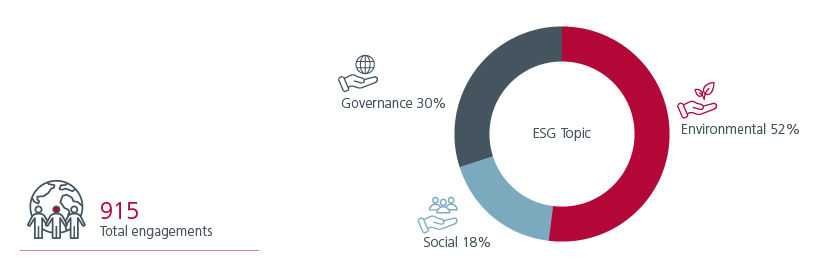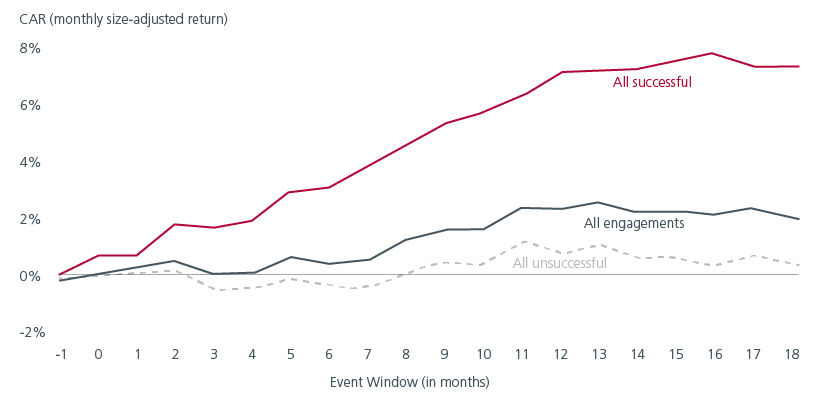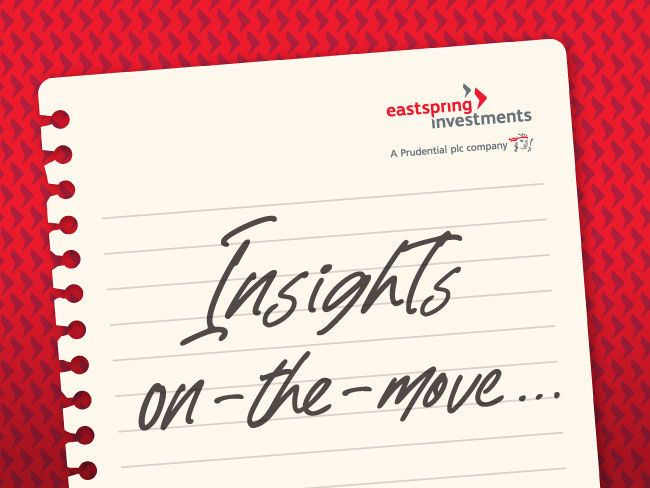Executive Summary
- Active engagement is a key alpha driver, enabling informed decisions and measurable progress across the investment cycle.
- Engagement and proxy voting are central to active ownership, helping companies align with long-term sustainability goals.
- Studies confirm that successful shareholder engagement can boost returns and enhance long-term performance.
In our Why it pays to be dirty article, we highlighted that by choosing not to ignore “dirty” industries, investors enjoy an expanded investment universe and increased alpha opportunities. From a viewpoint of climate transition, this also allows investors to deliver impact from investing in companies from “brown” sectors that are taking concrete steps to adapt their businesses to a climate changed world. This is particularly relevant for those investing in Asia and the Emerging Markets (EMs) where brown industries form a significant part of the economy.
As such, investing and facilitating the transition of assets from “brown to green” will be both essential and create more real-life impact than investing in already existing green investments. One of the key components of facilitating the transition is via active engagement, especially on companies in high conviction active portfolios.
Asset managers who actively engage with companies for better sustainable practices and encourage improvements drive change that can lead to enhanced long-term financial performance and value creation. We consider engagement and proxy voting as key elements of our active ownership initiatives.
Milestone-based engagements are essential
For us as active managers, company engagement serves multiple purposes. First, it helps us with informed decision making and improved risk assessment during the due diligence phase. Second, it measures progress, promotes sustainable practices and ensures transition alignment of the companies we invest in. Third, it presents a real alpha opportunity in and of itself.
Only by engaging are we able to influence policies at the corporate level and hold firms accountable for their actions. This is something passive investors are unable to do. Through constructive dialogue, we safeguard shareholder rights and interests. In our experience, management teams value this feedback loop, as it enables us to share insights and lessons learned from other portfolio companies and their respective transition journeys.
Our engagement process incorporates a range of milestones and spans the full investment cycle, aiming to assess and improve climate transition and business performance while keeping social factors in focus. We evaluate each company’s strategy and progress across business lines, focusing on both climate adaptation and mitigation for a holistic transition.
The improvement plan addresses gaps identified through research and discussions with the firm, peers, and industry experts. Engagements are integral to our fundamental analysis, as climate transition readiness is a key alpha driver
Engaging with companies that score well on the Eastspring-Prudential Climate Framework often sparks meaningful dialogue around long-term value creation for shareholders. These firms are receptive to linking early-stage climate initiatives with near-term revenue drivers, shifting the focus from broad targets to tangible pathways for implementation and growth. We believe that long-term outcome-based engagements will allow us to collectively move the needle on progress especially in EMs where it is needed the most.
Reinforcing engagements via proxy voting
Engagement and proxy voting are core to active ownership, guiding companies to align their transition with long-term sustainability goals. An active engagement policy helps prioritise and align resources effectively. In addition, it results in firms maximising transition outcomes while not causing harm to social ones. This is essential in advancing a just transition in Asia and EMs.
Aligning our engagement with how we vote results in an approach that encourages companies to:
- Adopt holistic climate transition strategies aligned with long-term capital planning
- Track and disclose social impact, such as workforce training and employee turnover
- Engage in climate risk discussions, including scenario analysis and carbon pricing
- Commit to best-practice targets such as Net Zero and/or align with their country’s Nationally Determined Contribution (NDC) targets
By way of example, in the case of an energy company in Asia, we voted “for” a board report despite a proxy advisor’s “against” recommendation. While the proxy advisor required specific emission reduction goals, the company had intentions promoting other aspects of the transition such as green energy generation targets. Our analysis also found that the company’s transition plan met national leadership benchmarks, including strong governance, interim targets, and alignment with global standards. Given its progress and market context, we supported the firm’s efforts.
Fig 1: Total engagements in 2024

Source: Eastspring Investments
Boosting alpha with impactful engagement
We believe that active engagement leads to superior portfolio outcomes and is an alpha contributor over the investment cycle. Several academic studies point to positive excess returns through engagement, thereby confirming our belief.
To highlight one example: joint research1 by academics from the University of Cambridge, Temple University and Boston College comprising 613 listed firms over 10 years revealed that engagements generated a +2.3% excess cumulative abnormal return over the year following the initial engagement. For firms where the engagement turned out to be successful, the positive effect was +7.1%.
We were not surprised to see that those companies also experienced improved accounting performance and increased institutional ownership. For an engagement with a corporate to make sense as an active investor, it is crucial that the typical investment holding periods matches or exceeds the expected engagement timelines. Here the study highlighted the time from initial engagement to success was on average 1.5 years, aligning well with our typical multi-year holding period for portfolio companies.
Other research too point to similar conclusions. A study2 looking at the impact of shareholder engagement and downside risk in 2023 highlights that there are key risk reduction benefits. For us, managing risk is just as important as generating returns. Prudent portfolio management is likely to result in better risk-adjusted-returns over time, besides safeguarding against negative reputational exposures.
Fig 2: Engagement and the impact on alpha generation

Source: Active Ownership research paper, August 2015 by Dimson, Karakas and Li.
Collective efforts enhance shareholder value
Separately, another research paper analysing a Principles for Responsible Investment (PRI) dataset of over 900 listed firms concluded that “coordinated engagements are value-enhancing for shareholders”. The authors showcase that returns are enhanced if coordinated engagements with other shareholders have a clear lead investor and improvement metrics are explicitly defined.
In this regard, we are part of several collaborative platforms such as UNPRI, AIGCC and Climate Action 100+ and we have been the lead or co-lead engager for various portfolio holdings. Such collaboration gives us greater leverage and a more effective platform for influencing corporate behaviour.
Sources:
1 Active Ownership” research paper, August 2015 by Dimson, Karakas and Li
2 “ESG Shareholder Engagement and Downside Risk” research paper, September 2023
Singapore by Eastspring Investments (Singapore) Limited (UEN: 199407631H)
Australia (for wholesale clients only) by Eastspring Investments (Singapore) Limited (UEN: 199407631H), which is incorporated in Singapore, is exempt from the requirement to hold an Australian financial services licence and is licensed and regulated by the Monetary Authority of Singapore under Singapore laws which differ from Australian laws
Hong Kong by Eastspring Investments (Hong Kong) Limited and has not been reviewed by the Securities and Futures Commission of Hong Kong.
Indonesia by PT Eastspring Investments Indonesia, an investment manager that is licensed, registered and supervised by the Indonesia Financial Services Authority (OJK).
Malaysia by Eastspring Investments Berhad (200001028634/ 531241-U) and Eastspring Al-Wara’ Investments Berhad (200901017585 / 860682-K).
Thailand by Eastspring Asset Management (Thailand) Co., Ltd.
United States of America (for institutional clients only) by Eastspring Investments (Singapore) Limited (UEN: 199407631H), which is incorporated in Singapore and is registered with the U.S Securities and Exchange Commission as a registered investment adviser.
European Economic Area (for professional clients only) and Switzerland (for qualified investors only) by Eastspring Investments (Luxembourg) S.A., 26, Boulevard Royal, 2449 Luxembourg, Grand-Duchy of Luxembourg, registered with the Registre de Commerce et des Sociétés (Luxembourg), Register No B 173737.
Chile (for institutional clients only) by Eastspring Investments (Singapore) Limited (UEN: 199407631H), which is incorporated in Singapore and is licensed and regulated by the Monetary Authority of Singapore under Singapore laws which differ from Chilean laws.
The afore-mentioned entities are hereinafter collectively referred to as Eastspring Investments.
The views and opinions contained herein are those of the author, and may not necessarily represent views expressed or reflected in other Eastspring Investments’ communications. This document is solely for information purposes and does not have any regard to the specific investment objective, financial situation and/or particular needs of any specific persons who may receive this document. This document is not intended as an offer, a solicitation of offer or a recommendation, to deal in shares of securities or any financial instruments. It may not be published, circulated, reproduced or distributed without the prior written consent of Eastspring Investments. Reliance upon information in this document is at the sole discretion of the reader. Please carefully study the related information and/or consult your own professional adviser before investing.
Investment involves risks. Past performance of and the predictions, projections, or forecasts on the economy, securities markets or the economic trends of the markets are not necessarily indicative of the future or likely performance of Eastspring Investments or any of the funds managed by Eastspring Investments.
Information herein is believed to be reliable at time of publication. Data from third party sources may have been used in the preparation of this material and Eastspring Investments has not independently verified, validated or audited such data. Where lawfully permitted, Eastspring Investments does not warrant its completeness or accuracy and is not responsible for error of facts or opinion nor shall be liable for damages arising out of any person’s reliance upon this information. Any opinion or estimate contained in this document may subject to change without notice.
Eastspring Investments companies (excluding joint venture companies) are ultimately wholly owned/indirect subsidiaries of Prudential plc of the United Kingdom. Eastspring Investments companies (including joint venture companies) and Prudential plc are not affiliated in any manner with Prudential Financial, Inc., a company whose principal place of business is in the United States of America or with the Prudential Assurance Company Limited, a subsidiary of M&G plc (a company incorporated in the United Kingdom).














